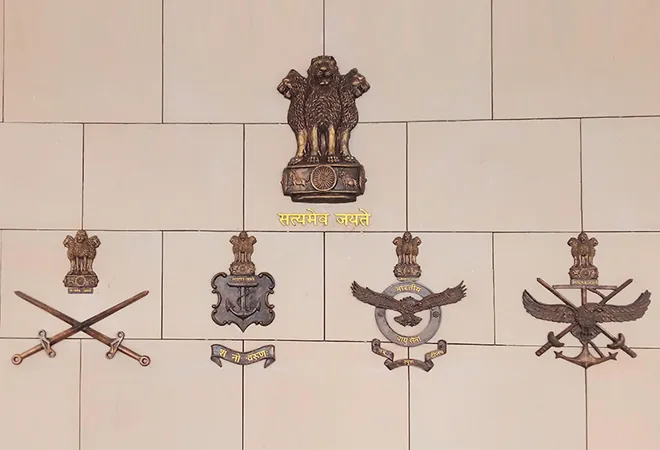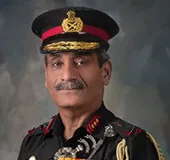
The year gone by has been tough one on several counts for the whole world. The Covid-19 crisis caused death and misery at an unprecedented scale. Economic downturn was such a big fallout that the world will take a long time to fully come out of it. For India, there was an additional challenge.
China’s adventurism in Ladakh attempted to force changes in borders, even as the world battled the pandemic. This in turn has led to huge deployments on both sides of the Line of Actual Control (LAC), with a build-up of troops, weapons and platforms that is likely to last.
In this backdrop, it was widely expected that the
defence budget would be enhanced this year. It was increased from 4.71 lakh crore to 4.78 lakh crore. In absolute terms, the increase has not been significant, barely enough to cover inflation.
Under the Covid-19 overhang there are competing demands, with a huge focus on healthcare as a prime and universal concern.
To be fair to the government, under the Covid-19 overhang there are competing demands, with a huge focus on healthcare as a prime and universal concern, and it should be easy to understand why the government would not be able allocate more for defence needs.
Regretfully on the other hand, our security challenges and security needs can’t be wished away either. So what do we do? Can we look beyond the numbers and find some innovative solutions? Firstly, within the allocation, is there a way to rebalance the modernisation needs, the day to day running of the armed forces and the pension’s bill? That would be smart spending and will optimise the existing resources to the fullest. Secondly, as the kitty is limited, all innovative and out of the box solutions must be tried to optimise existing resources. And finally, whether there is any chance of generating more funds in ways not attempted before.
Defence budget consists of capital budget and revenue budget. A peculiar problem has been a disproportionately high revenue component, as armed forces are manpower intensive. For instance, last year the pensions accounted for 1.33 lakh crore, making it the second largest component of the 4.71 lakh crore budget after the revenue head. 82 percent of the army budget is its revenue component. Within the revenue component, the pension bill is the largest constituent.
A peculiar problem has been a disproportionately high revenue component, as armed forces are manpower intensive.
Capital budget is the one that funds acquisition of large platforms which account for modernisation. There is an urgent need to increase the capital outlay and somehow reduce the revenue expenditure. In defence allocation this year, the capital outlay has been increased from 1,13,734 crore (last year’s figures) to 1,35,060 crore. This is an increase of 19 percent, and in Defence Minister Rajnath Singh's own words, “the highest ever capital outlay for defence in 15 years.” On the other hand, allocation in defence pensions this year has been reduced to 1.13 lakh crore as against 1.33 crore last year, which was eventually revised to 1.25 lakh crore during the revised estimates. This can be seen as smart spending.
Let us discuss a few measures which can reduce the revenue expenditure of the defence budget, which is at the heart of smart spending and can give us more bang for the buck. First, a
proposal to increase of retirement age in selected categories is under consideration. This will, in time, effect reduction in the revenue budget. Second, a long standing demand of the armed forces has been that since a soldier retires early, there is merit in lateral absorption of a soldier in other departments or forces. This will ameliorate the burden of pension bill, besides providing disciplined and trained manpower. Right sizing of the armed forces is a bold exercise that has been undertaken by the defence forces themselves. Owing to ongoing integration of Army, Navy and Air Force, and raising other structures, this may take some time but will eventually scale down the revenue expenditure.
Leasing, rather than outright purchase which has recently been permitted for defence platforms is a step in the right direction.
Third, a new entry scheme for officers called tour of duty is under consideration. This will not only reduce the revenue expenditure in salaries as well as pensions but also attract better talent for shorter duration. This should also assist in engaging domain experts in high tech areas that are needed in fields such as cyber and space. In such high tech domains, infusion of fresh minds every few years is a better idea. Lastly, there is merit in examining smart financial engagement models other than outright purchase of everything. For instance, the transportation requirements in other than operational areas can be out sourced, as can several other logistic services. Leasing, rather than outright purchase which has recently been permitted for defence platforms is a step in the right direction.
Having two active borders with both nuclear neighbours, Indian armed forces are in serious need of modernisation. This cannot be wished away. Capital budget in a developing country like India will always be a premium. Can we explore feasibility of generating funds and line of credits? One bold move could be monetisation of some selected parcels of land. Before anyone protests, let a clarification be read. Land under Army’s control and use is A1 land in which cantonments and military stations are housed. No change is being suggested in these. There is land under the Defence Estates which is outside the cantonments and away, including grazing grounds etc. Some of these are being encroached. Judiciously selected, some of them can form part of this drive to modernise the armed forces. If we modernise sooner than later, not only will it enhance our combat potential, but also by doing so, it will save precious lives of soldiers. A final suggestion, in line with finance minister’s thrust on disinvestment. Defence PSUs and ordnance factory have huge potential to generate revenue as well as enhance their outputs by opting for joint ventures with private sector.
Capital budget in a developing country like India will always be a premium. Can we explore feasibility of generating funds and line of credits?
These suggestions will obviously require experts to identify ways of exploring the way forward. But continuing to modernise at the pace that we have been doing so far is not an option, lest we learn at our peril. A strong and capable military will deter any adversary from casting an evil design. Let the situation at the borders under the pandemic times be a push that is needed to overcome hurdles.
In this space, there have been a few heartening signs. The government has accepted Finance Commission’s recommendation regarding a non-lapsable capital outlay for modernisation. The Finance Commission has also recommended a non-lapsable fund for defence modernisation worth Rs 2.38 lakh crore for 2021-26. An assured commitment for modernisation will greatly assist the armed forces to execute a well thought out and a stable modernisation plan.
The Finance Minister did not mention the defence budget in her speech in the parliament, only the allocations were unceremoniously informed. As an optimist, I see that as symbolism for the fact that there is no price to be put for security of the country. Whatever is required will be made available, as the government states from time to time.
The views expressed above belong to the author(s). ORF research and analyses now available on Telegram! Click here to access our curated content — blogs, longforms and interviews.



 The year gone by has been tough one on several counts for the whole world. The Covid-19 crisis caused death and misery at an unprecedented scale. Economic downturn was such a big fallout that the world will take a long time to fully come out of it. For India, there was an additional challenge.
The year gone by has been tough one on several counts for the whole world. The Covid-19 crisis caused death and misery at an unprecedented scale. Economic downturn was such a big fallout that the world will take a long time to fully come out of it. For India, there was an additional challenge.  PREV
PREV


